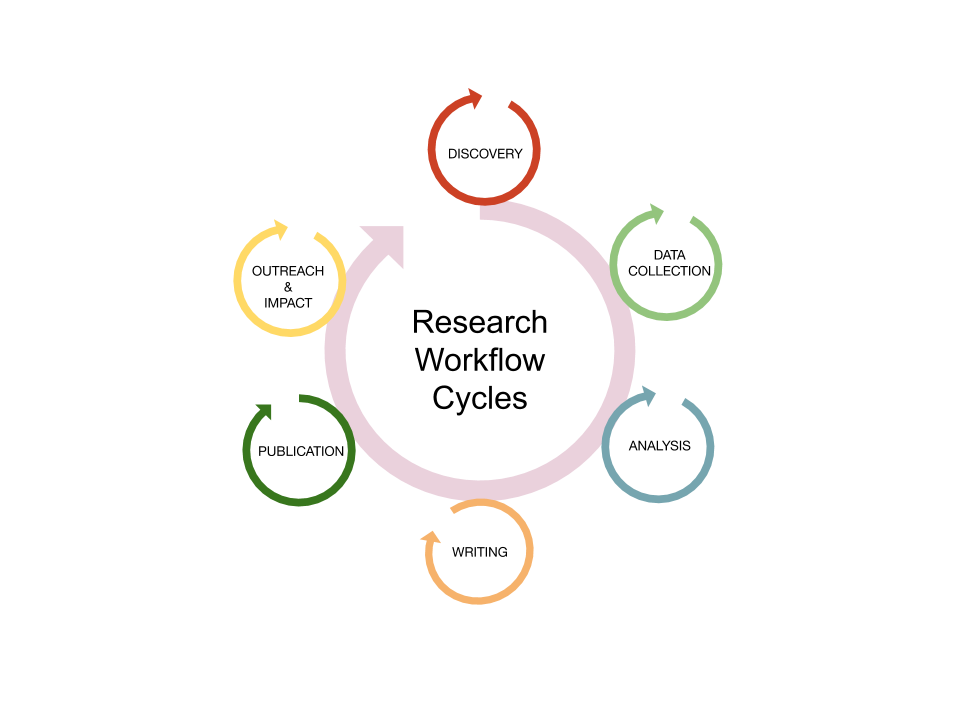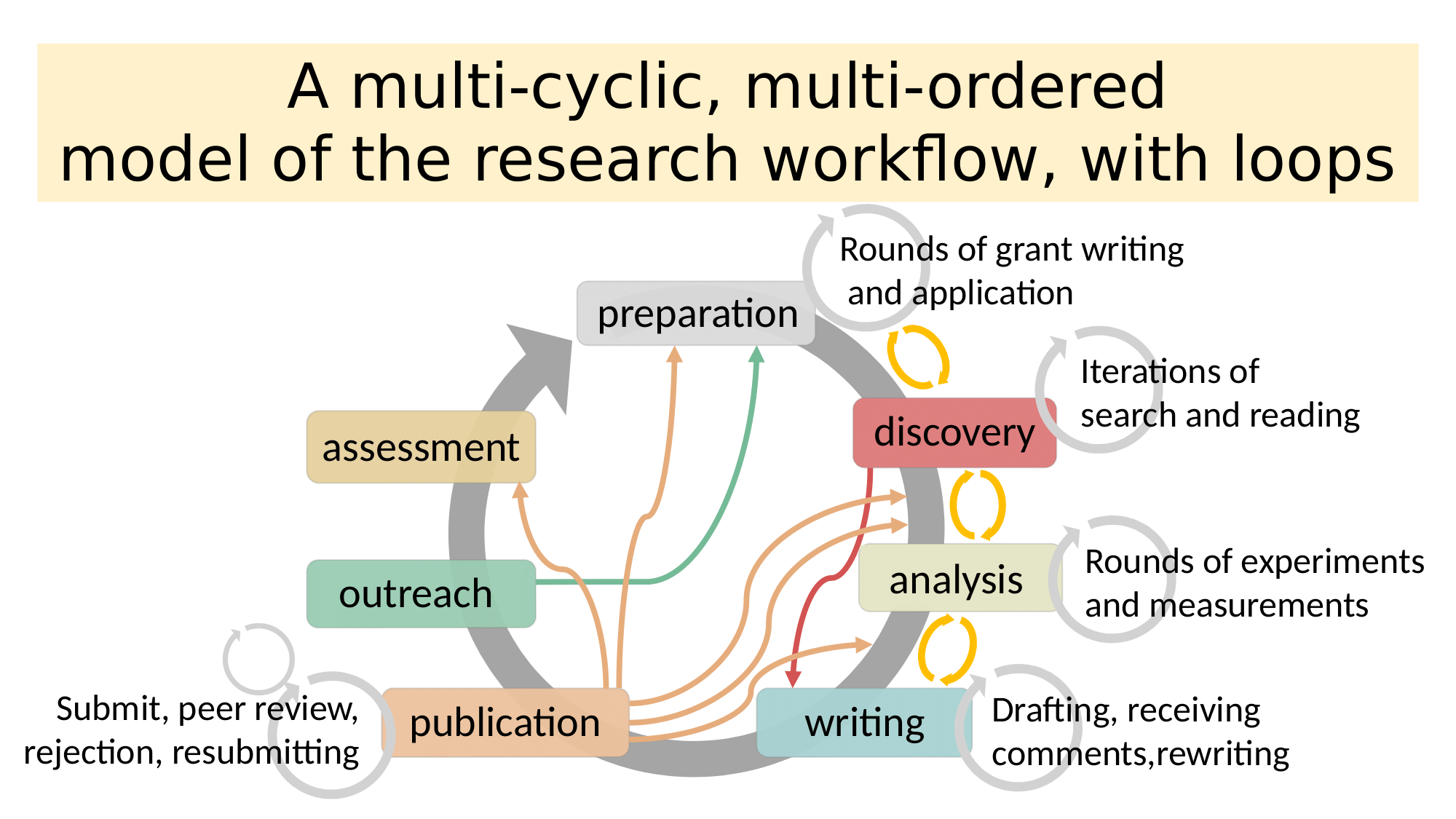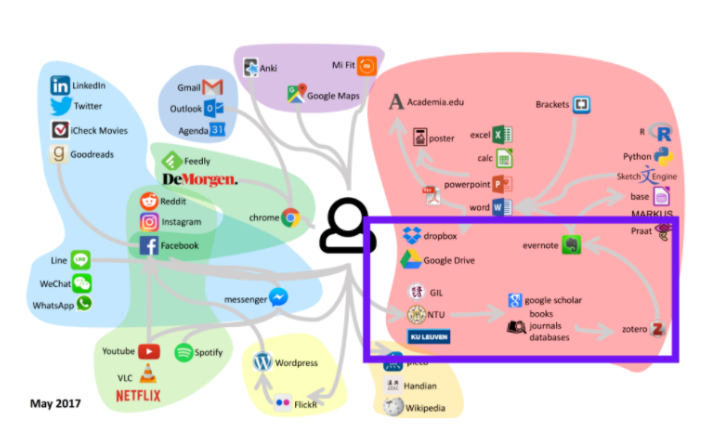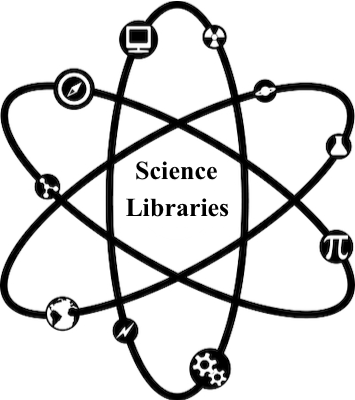Research Workflows#
It may be helpful to think of your research process as a workflow or cycle composed of smaller iterative cycles nested within your broader approach.
This is an example of a basic, simplified model (Figure 1) - moving from your initial discovery process (including idea generation and searching for information), to data collection, then analysis, writing up results, publication, and lastly a consideration of outreach and impact of your work.

Fig. 1 Basic Research Workflow#
However, real workflows are never this simple.
Figure 2 shows an example of more complex, iterative model []. You can see how multiple cycles nest within the larger cycle as each aspect of the workflow requires revisions, edits, clarifying experiments, etc.

Fig. 2 Multicycle Workflow#
Here is an even more realistic view of what your day to day workflow might look like:

Fig. 3 Honest Workflow#
Thomas Van Hoey, a graduate student in linguistics, took an honest look at his own workflow, which is probably a better representation of how most of us get through the day [].
A workflow does not exist on its own, but is made of choices - which software, applications and products to use; how do they work together effectively; how open and reproducible are they; and what makes sense for a given task, subject domain or project.
The following image comes from Bosman and Kramer’s 2016 survey [] of 20,000 researchers worldwide to give you a sense of how products sync to comprise a hypothetical workflow.

Fig. 4 Hypothetical Workflows#
As you go through these tutorials, we hope you gain a better sense of what tools are available for you here at Berkeley and how you can connect them thoughtfully to your preferred workflows.
